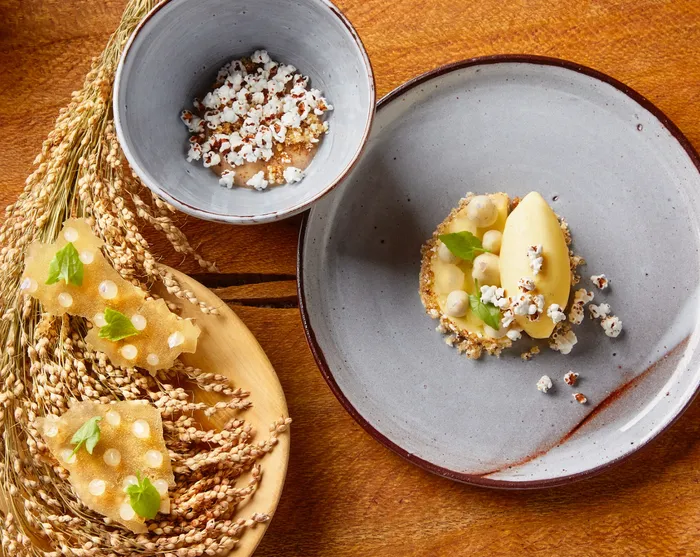Will Africa’s oldest ingredients survive modern lifestyles? A World Food Day spotlight

Madagascar vanilla and sorghum.
Image: The Living Room
Last week, I had the privilege of speaking with chef Rev Batohi, one of Durban’s leading chefs, about his role in South Africa’s food and hospitality industry.
During our conversation, he raised concerns about the decline in the use of indigenous and traditional foods, as well as the fading of traditional cooking practices.
According to Batohi, this shift is driven by global trends and the pressures of modern lifestyles, which have led many people to forget the value of local ingredients and age-old methods of preparing them.
This opened my eyes to the risk of losing our culinary heritage. While fast food, imported ingredients and convenience-focused cooking dominate many kitchens, a growing number of chefs in South Africa are working to ensure that indigenous foods remain part of our everyday meals.
They are preserving flavours, techniques and the ingredients that connect us to our history and environment, proving that traditional foods can be both relevant and sustainable in contemporary dining.
Take, for example, chef Mokgadi Itsweng. She is known for incorporating indigenous ingredients into her dishes, such as mushroom sorghum risotto, which highlights her dedication to local flavours.
Chef Johannes Richter is another leader in this space. His menu features ingredients like amadumbe, amathungulu, teff, sorghum, purple sweet potato and pigeon pea, showcasing the variety of indigenous crops that are still available to us.
Chef Mmabatho Molefe reimagines Zulu cuisine, drawing from her childhood experiences and challenging misconceptions about African food, bringing traditional flavours into modern dining experiences.

Amadumbe gnocchi with basil pesto oil and venison burger pattie with chakalaka.
Image: Buhle Mbonambi
These chefs represent only a portion of the culinary innovators in SA who are committed to keeping indigenous ingredients on our plates.
With World Food Day celebrated on Thursday, October 16, it’s worth taking a closer look at the nearly forgotten indigenous foods that have sustained African diets for centuries.
Africa’s ancient crops, including millet, sorghum, teff, pigeon peas, morogo, amadumbe, fonio and various leafy greens, are not only nutritious but also flexible.
They can grow in local conditions, withstand droughts and require fewer resources than many imported crops. This makes them a critical component in feeding the future.

Morogo and cheese griller pies.
Image: File
These indigenous foods are nutrient-dense, often rich in fibre, protein, vitamins and minerals.
They offer alternatives to processed foods and can help combat malnutrition, obesity and diet-related diseases, which are rising in urban areas.
By integrating these foods into modern diets, chefs and households alike can create meals that are both healthy and connected to the land.
Indigenous crops also carry cultural significance, linking communities to their history, stories and traditions.
Embracing these foods means more than just cooking with them; it involves valuing the knowledge of older generations who cultivated and prepared them, learning the methods of cooking that preserve flavour and nutrition, and finding ways to incorporate them into modern recipes.